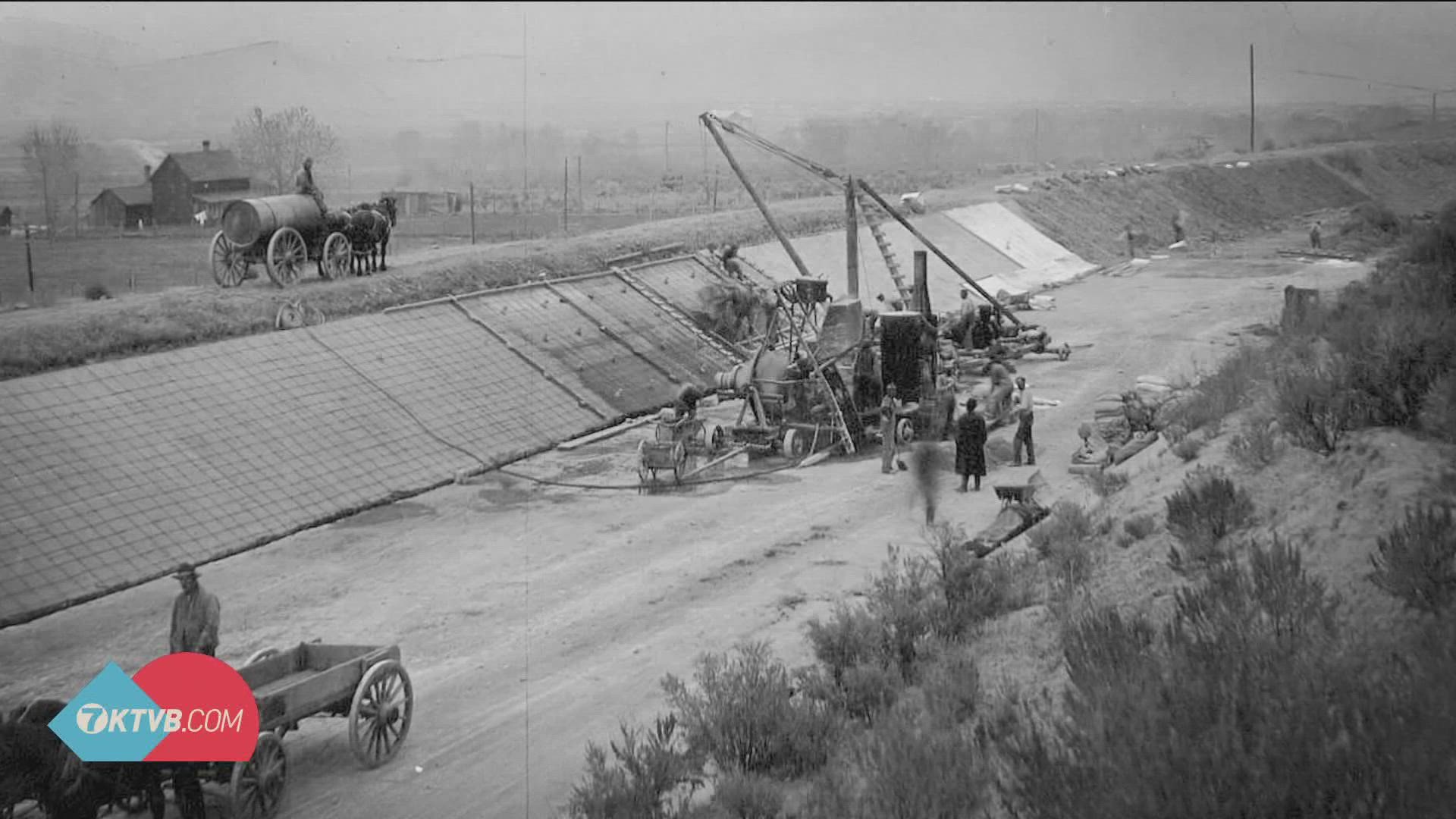IDAHO, USA — By the spring of 1863, just before the formation of Fort Boise there were about 100 non-native people living in the valley.
By 1900, 10 years after Idaho became a state, that population was above 19,000. The makeup was still very rural, with more than 1,600 farms on more than 113,000 acres of land, according to the Idaho State Historical Society.
About 896,000 of those acres were irrigated, thanks to the 568 miles of canals and irrigation ditches that spider-webbed across the valley.
Communities can't grow, in more ways than one, without access to water and pioneers had to figure out how to get water from the valley floor, up and out into higher elevations like the bench. They did it relatively quickly, within about three decades, or one generation.
Time, water and growth all come together to tell the story of Friday's Get to Know Idaho.
You have likely seen or driven on Ustick Road. It stretches 40 miles from Curtis Road mostly straight to the Snake River. It was once on a timeline to become its own, independent community, until time and growth got in the way.
Water, like time, can roll by undeterred, altered sometimes only by the path in front of it. A change in direction can change a lot. Water is what made the Treasure Valley productive and livable and led to communities popping up.
"If you're in a barren landscape, the next obvious thing is you need to find access to water," Historian with the Idaho State Historical Society, HannaLore Hein said.
In the 1870s, a canal system began to take shape, a series of ditches to take river water where it wasn't.
Think the New York, Ridenbaugh and Settlers.
"By 1891, there were nearly 50 miles of canals that brought Boise River water as far west as Nampa," Hein said.
This called for homesteads and farms sprouting in spots south and west.
"We have Boise in a central location and we have a town of Meridian that had started to grow in 1893 and this Ustick property sat kind of in-between the two," Hein said.
160 acres claimed by Jacob Clemons in 1894, who filled them with orchards.
"Anytime you have a product, you have to have a way to bring that product to market," Hein said.
Back then, that meant investing in railroads.
"So, the Boise Interurban Railway had a loop that took people and goods from Boise along State Street to Collister, a number of points, then, back down along what we consider Ustick Road back down into downtown Boise," Hein said.
One of those investors of the Interurban Railway was a gentleman named Dr. Harlen P. Ustick.
"So, this is where this name Ustick comes into the picture," Hein said.
An ear, nose and throat doctor from Ohio, Ustick also had an eye for business and thoughts of building a town.
So, Ustick acquired some of Clemons Acres and laid out his plans and the plats by 1907. People bought into Ustick's idea.
"We clearly see the Boise valley railway line following this route," Hein said. "You had a train track that runs through, you got water, now you got people interested in buying there, what came next? He ended up opening a bank and he served as president of a bank in town."
However, Ustick wasn't much of a banker and it closed after just three years.
"But they were also able to secure a mercantile store," Hein said.
Even the orchards found success in the form of a cider house.
"There was a Baptist church that opened and built a building," Hein said. "There was a Ustick school and it really did operate as a true individual community."
A community that was cut short, much like Dr. Ustick himself.
"In 1917, he was visiting some of his mining interest in Yellow Pine and he died of a heart attack," Hein said.
After that, nothing could stop the life being squeezed from his town.
"You know, by 1918, we're in the middle of a world-wide pandemic and we're in the middle of WWI and things are changing," Hein said. "Interurban Railways are no longer as critical, because automobiles have become the primary mode of transportation. Boise is growing, Meridian is growing."
The two became actual cities, while Ustick tried to stick with its roots.
"Ustick never elevated to that level, in part because they always were rural, they always maintained that rural profile and they never let that go," Hein said. "Eventually those orchards became subdivisions and eventually the City of Boise annexed those subdivisions into city limits."
That was in 1995. Nearly 30 years after, you can still see some of what Ustick envisioned more than 115 years ago.
"The original bank building and the original mercantile building are still standing," Hein said.
So are the lessons learned.
"Change happens all the time, but change also leaves breadcrumbs and if we can take the time to watch for that change and to see what has been left behind, there's always a story that we can learn from that," Hein said.
The town of Ustick lasted 50 years, 40 years after its founder's death, with the post office being shut down in 1958. The school stopped teaching kids a year later.
Residents once tried to get those few remaining buildings listed on the National Register of Historic Places, but only the school was added back in 1982.
Join 'The 208' conversation:
- Text us at (208) 321-5614
- E-mail us at the208@ktvb.com
- Join our The 208 Facebook group: https://www.facebook.com/groups/the208KTVB/
- Follow us on Twitter: @the208KTVB or tweet #the208 and #SoIdaho
- Follow us on Instagram: @the208KTVB
- Bookmark our landing page: /the-208
- Still reading this list? We're on YouTube, too:

